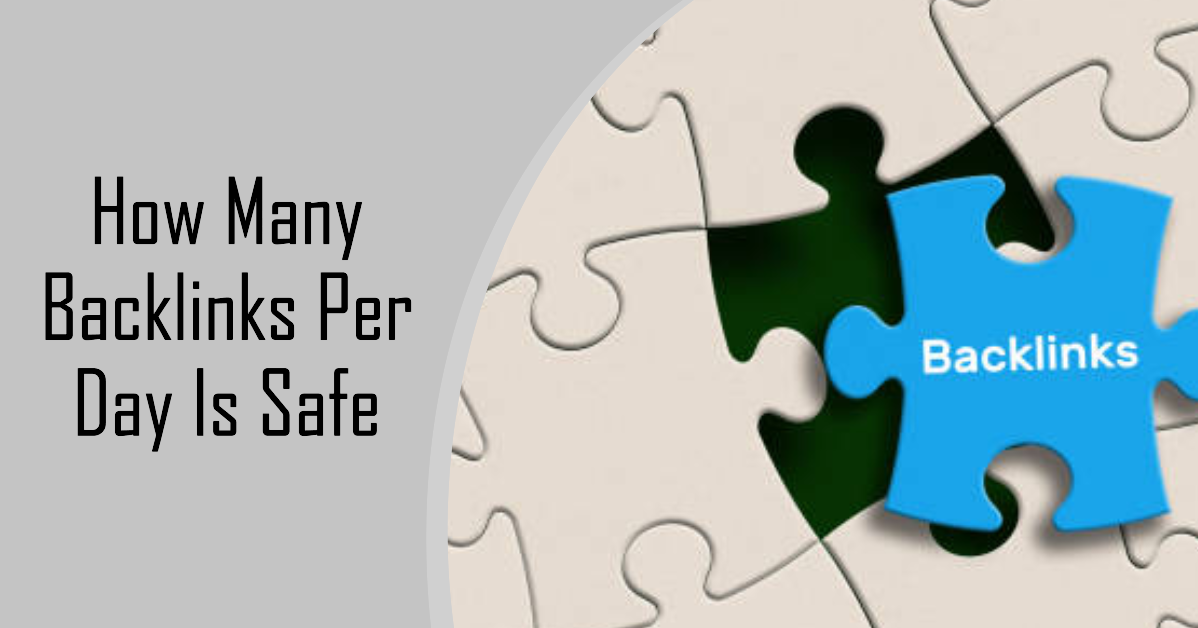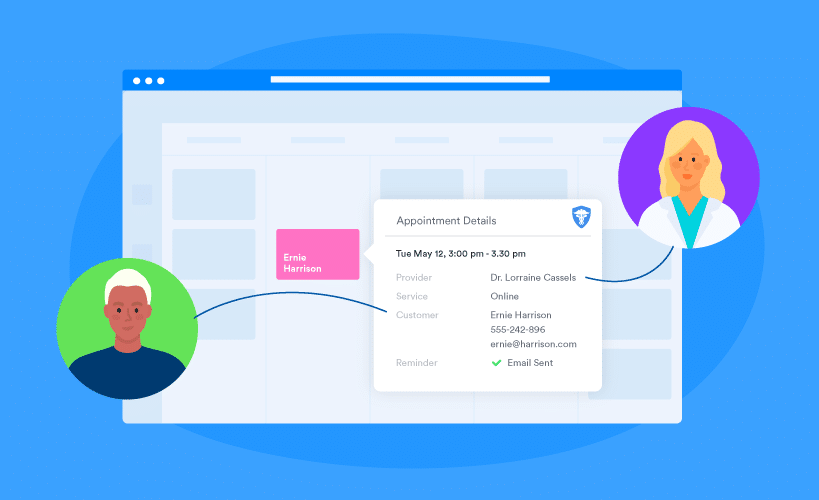How many backlinks per day is safe? This is a common question in the SEO world.
The answer isn’t simple, but generally, a natural and steady growth is key. Backlinks are essential for SEO success. They help search engines determine your site’s relevance and authority. But building too many backlinks too quickly can raise red flags.
It can lead to penalties from search engines. So, maintaining a balance is crucial. In this blog, we’ll explore safe backlink practices. We’ll discuss how to build backlinks without risking your site’s reputation. Understanding these practices will help you grow your site’s visibility in a sustainable way. Stay tuned to learn more about safe backlink strategies.
Importance Of Backlinks
Backlinks are a key factor in search engine optimization (SEO). They act as a vote of confidence from one site to another. The more high-quality backlinks your website has, the more trustworthy and authoritative it appears.
But how many backlinks per day is safe? To answer that, let’s first understand their role in SEO and their impact on rankings.
Role In Seo
Backlinks are critical for SEO. They help search engines understand how your content is connected to other content on the web. This makes your site more visible.
When you add a backlink from a reputable site, it signals to search engines that your content is valuable. This can lead to higher rankings.
However, not all backlinks are created equal. Quality matters more than quantity. A few links from high-authority sites can be more beneficial than many from low-quality sites.
Impact On Rankings
Backlinks directly impact your search engine rankings. High-quality backlinks can push your site up the search results. This leads to more organic traffic.
But there’s a catch. Building too many backlinks too quickly can raise red flags. Search engines might see this as suspicious behavior, potentially leading to penalties.
So, what’s the safe number? It’s best to focus on acquiring natural backlinks. Aim for steady growth rather than a sudden spike. This approach keeps your site in good standing with search engines.
Think about it: would you rather have a slow, sustainable rise in traffic or a quick spike followed by a drop? The answer is clear. Consistency is key.
In my experience, focusing on quality content and natural link building always pays off. I’ve seen sites flourish by earning a few high-quality backlinks per week. Quality over quantity wins every time.
Remember, patience and persistence are your best allies in the journey to SEO success. So, how will you strategize your backlink building moving forward?
What Are Safe Backlinks
Understanding what constitutes safe backlinks is crucial for your website’s SEO health. Safe backlinks are those that do not raise red flags with search engines like Google. Instead of quantity, they focus on quality and relevancy.
Quality Vs Quantity
When thinking about backlinks, quality should always take precedence over quantity. A few high-quality backlinks from reputable websites will benefit you more than numerous low-quality ones. For example, a backlink from a well-known industry blog is far more valuable than ten backlinks from random, unrelated sites.
High-quality backlinks signal to search engines that your site is a trusted resource. These links should come from websites with good domain authority and relevant content to your niche.
On the other hand, a large number of low-quality backlinks can harm your site. Search engines might see this as an attempt to manipulate rankings. This could lead to penalties, dropping your site’s position in search results. So, focus on earning links from authoritative sources.
Natural Link Building
Natural link building is key to acquiring safe backlinks. This means earning links in a way that seems organic rather than forced. Think about the last time you shared an article simply because it was useful. That’s what you’re aiming for.
Creating high-quality, valuable content is the best way to attract natural backlinks. For example, comprehensive guides, insightful articles, and useful tools are great ways to earn these links. Make your content so valuable that others can’t help but link to it.
Engage with your audience and industry peers. Share your content on social media, participate in forums, and comment on other blogs. These actions increase your visibility and the likelihood of earning natural backlinks.
Have you ever wondered how many backlinks you should aim for each day? The truth is, there’s no magic number. Focus on quality and natural growth rather than hitting a specific quota. What strategies have worked for you in building safe backlinks? Share your thoughts in the comments!
Factors Influencing Safe Backlink Numbers
Understanding how many backlinks per day is safe can be tricky. Several factors influence what is considered a safe number. Let’s dive into two major factors: Domain Authority and Website Age.
Domain Authority
Domain Authority (DA) is crucial. Websites with higher DA can handle more backlinks daily without raising red flags. Think of DA as your site’s reputation score. The higher it is, the more trustworthy your site appears.
If your website has a high DA, you can likely add more backlinks safely. However, if your site is new or has a low DA, adding too many too quickly can look suspicious to search engines. They might think you’re trying to manipulate rankings.
For instance, a site with a DA of 50 might handle 10-20 backlinks per day. A new site with a DA under 10 might want to stick to 1-2 backlinks per day. Always consider your site’s authority before going on a backlink spree.
Website Age
The age of your website also plays a significant role. Older websites usually have more established backlinks. They can safely add more without triggering penalties.
New websites need to be cautious. Adding too many backlinks too quickly can look unnatural. It’s like trying to build a skyscraper in a day. You need a strong foundation first.
If your website is less than a year old, build links slowly and steadily. Focus on creating quality content that naturally attracts backlinks. Over time, as your site ages, you can gradually increase the number of backlinks you add daily.
What strategies have you tried to build backlinks safely? Have you noticed any changes in your site’s performance based on your approach?
Daily Backlink Acquisition
Building backlinks is crucial for SEO. But how many backlinks can you safely add per day? Let’s explore.
Organic Growth
Backlinks should grow naturally. Adding too many links in one day can look suspicious.
I once tried adding 50 backlinks overnight. My website’s ranking dropped.
Aim for a steady pace. Maybe 5-10 quality links per day.
Quality matters more than quantity.
Think about how you found a great article through a friend’s recommendation. That’s how backlinks should feel—natural and helpful.
Avoiding Penalties
Search engines like Google frown upon aggressive backlink strategies.
Too many links too fast can trigger penalties.
I learned this the hard way. It took months to recover from a penalty.
Use tools like Google Search Console to monitor your backlink growth.
Ask yourself: Do these links genuinely add value?
Keeping an eye on your link profile helps maintain a healthy, penalty-free website.
Expert Tips For Safe Backlinking
Backlinking is a crucial part of SEO. But knowing how many backlinks per day is safe can be tricky. Experts suggest focusing on quality rather than quantity. Here are some expert tips for safe backlinking.
Diversify Sources
Rely on different sources for backlinks. Do not get links from the same site often. This can look unnatural to search engines. Use blogs, forums, and social media. This gives a balanced link profile. Links from varied sources are safer and more credible.
Monitor Backlinks
Always keep an eye on your backlinks. Check if they are from trusted sites. Use tools like Google Search Console. This helps you spot and remove bad links. Regular checks ensure your backlinks stay clean and safe.

Credit: outreachcrayon.com
Tools For Backlink Analysis
Backlink analysis is crucial for understanding your site’s SEO health. With the right tools, you can monitor backlinks, identify issues, and take necessary actions. This section explores popular tools for backlink analysis and how to use them effectively.
Popular Tools
Several tools can help you analyze backlinks efficiently. Some of the most popular ones include:
- Ahrefs
- SEMrush
- Moz
- Majestic
Each tool offers unique features for backlink analysis. Below, we’ll explore how to use these tools.
How To Use
Ahrefs: Begin by entering your website URL in the Ahrefs Site Explorer. Navigate to the “Backlink Profile” section. Here, you can see all your backlinks. Filter the results to find high-quality links.
SEMrush: Start by using the “Backlink Analytics” tool. Enter your website. SEMrush will show a detailed backlink report. Pay attention to the “Referring Domains” and “Backlink Types” sections.
Moz: With Moz’s Link Explorer, input your website URL. You will see various metrics such as Domain Authority and Spam Score. Use these metrics to assess the quality of your backlinks.
Majestic: Enter your website in Majestic’s Site Explorer. Look at the “Backlink History” and “Referring Domains” sections. This tool also shows the “Trust Flow” and “Citation Flow” metrics.
These tools help in maintaining a healthy backlink profile. Regular analysis keeps your SEO strategy on track.
Common Mistakes To Avoid
Building backlinks is crucial for SEO. But, many make mistakes that can harm their site. Avoiding these common mistakes can keep your site safe and improve your rankings.
Over-optimization
Over-optimization is a common mistake. It means using too many keywords in your anchor texts. This can look unnatural to search engines. It may lead to penalties. Use varied anchor texts. Keep it natural and relevant to the content.
Buying Links
Buying links is a risky strategy. It can lead to a Google penalty. Paid links often come from low-quality sites. These sites offer little value. They can harm your site’s reputation. Focus on earning links organically. Create high-quality content. Build genuine relationships with other sites.

Credit: www.linkedin.com
Long-term Backlink Strategies
Long-term backlink strategies are vital for sustainable SEO growth. Building backlinks safely over time helps avoid penalties and ensures steady progress. Two effective methods include creating valuable content and establishing strong relationships.
Content Creation
Creating high-quality content attracts natural backlinks. Write informative articles that solve problems. Share unique insights that others find useful. Ensure your content is easy to read and engaging. Use simple language and clear headings.
Regularly update your blog with fresh content. Consistency builds trust and keeps readers coming back. Incorporate different content formats, like infographics and videos. Visual content often attracts more shares and links.
Focus on evergreen topics. Evergreen content remains relevant over time. This type of content continues to attract backlinks long after it’s published.
Building Relationships
Building strong relationships with other bloggers and influencers can lead to quality backlinks. Start by engaging with their content. Leave thoughtful comments. Share their posts on social media. Show genuine interest in their work.
Reach out with personalized messages. Offer to collaborate on projects. Guest posting is another effective strategy. Write guest posts for reputable blogs in your niche. This introduces your content to a new audience and earns valuable backlinks.
Networking at industry events can also help. Meet fellow bloggers and industry experts. Exchange ideas and explore collaboration opportunities. Strong relationships often lead to mutual support and more backlinks.

Credit: www.youtube.com
Frequently Asked Questions
How To Build 100 Backlinks In 30 Days Or Less?
To build 100 backlinks in 30 days, focus on guest blogging, outreach to influencers, and directory submissions. Share valuable content on social media and engage in forums. Utilize broken link building and collaborate with niche-related websites.
Are Too Many Backlinks Bad?
Too many low-quality backlinks can harm your site’s ranking. Focus on acquiring high-quality, relevant backlinks instead.
What Is The Toxic Score For Backlinks?
The toxic score for backlinks measures the potential harm a link can cause to your website’s SEO. High toxic scores indicate risky links.
What Is A High Number Of Backlinks?
A high number of backlinks typically ranges from 1,000 to 10,000 or more. Quality matters more than quantity.
Conclusion
Building backlinks requires a careful approach. Too many too fast can harm. Aim for steady growth. Quality matters more than quantity. Focus on relevant, high-authority sites. Monitor your progress regularly. Consistency is key for long-term success. Avoid shortcuts and stay patient.
Your site will benefit in the end.





